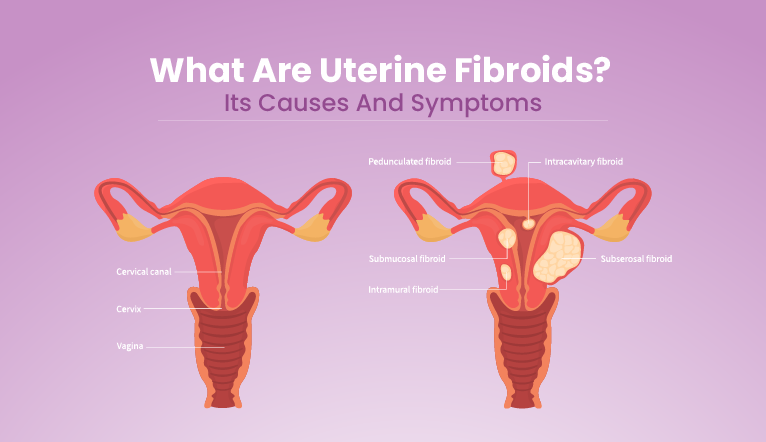
Uterine Fibroids
Fibroids are the most commone type of noncancerous growths found in a woman’s pelvis that often appear in childbearing years. While they are generally benign, fibroids can cause a range of symptoms and complications. It is important to understand the diagnosis and treatment choices available to our patients.
Types of Fibroids
Uterine fibroids are also called Leiomyomas or myomas that develop from the muscle tissue of the uterus.
The shape, size, and location of fibroids can vary greatly. They may be inside the uterus, on the outersurface or within it wall, or attached to it by a stem-like structure.
Fibroids can range in size from pea-sized growths to large, round ones that may be more that 5 to 6 inches wide. As these fibroids grow, they can distort the inside and the outside of the uterus. The fibroids can also grow large enough to completely fill the pelvis or abdomen.
Whether fibroids develop one at a time or in groups is hard to predict. They may also remain small for a long period of time, suddenly grow rapidly, or grow slowly over a number of years.
Symptoms
Some of the following symptoms are caused by fibroids:
- Changes in menstruation –longer more frequent, or heavy menstrual periods
- Menstrual pain (cramps)
- Vaginal bleeding other than during menstruation
- Anemia (from blood loss)
- Pain – in the abdomen or lower back (often dull, heavy, and aching at times may be sharp)
- Painful sex
- Pressure – difficulty urinating or frequent urination
- Constipation, rectal pain, or difficult bowel movements
- Abdominal cramps – enlarged uterus and abdoment
- Miscarriages
- Infertility
Diagnosis
There are several ways of diagnosing fibroids:
- Physical Examination: the presence of fibroids may be detected during a routine pelvic exam. They can feel irregularities in the shape of the uterus that may be indicative of fibroids.
- Ultrasound: Transvaginal or abdominal ultrasound is the most common method for confirming the presence of fibroids. It creates images of the uterus and fibroids, allowing the doctor to determine their size, location, and number.
- MRI (Magnetic Resonance Imaging): In some cases, MRI is used to get a more detailed picture of the fibroids. This is particularly useful when surgical intervention is being considered.
- Hysteroscopy: In this procedure, a thin, lighted tube is inserted into the uterus through the cervix, allowing the doctor to visually inspect the uterine cavity and identify fibroids.
- Biopsy: In rare cases where cancer is suspected, a small tissue sample may be collected for further testing. However, this is not a common diagnostic procedure for fibroids.
Treatment
Fibroids do not always cause symptoms, but when they do, it’s both excruciating and debilitating. If you suspect you may have fibroids or are experiencing symptoms like heavy menstrual bleeding, pelvic pain, or pressure, it’s crucial to consult with our providers. They can recommend the most appropriate diagnostic methods and treatment options based on your individual circumstances, helping you find relief and improve your quality of life.
Dr. Shilad’s experience enables him to diagnose and treat fibroids with expertise and confidence with a collaborative approach with the patient. With advances in medical technology and a range of treatment choices available, managing fibroids has become more manageable and less invasive, offering hope and relief to those affected by this common condition.

